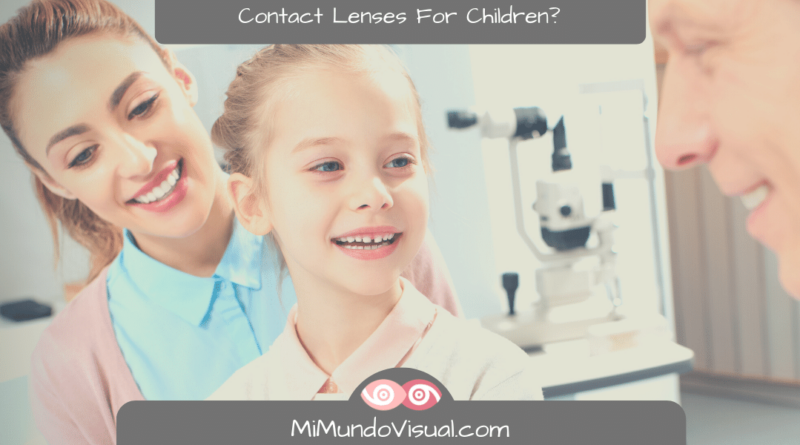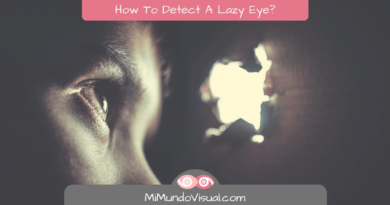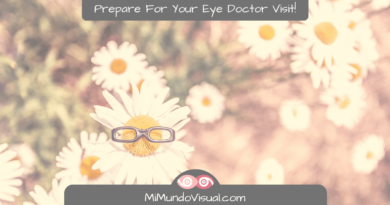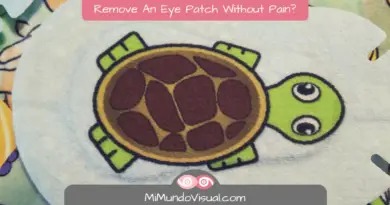Contact Lenses For Children With Lazy Eye?
Table Of Contents
When we think of contact lenses, we don’t usually think of them as a tool to help treat Amblyopia, even less so for children. However, some studies claim that using contact lenses in children to treat anisometropia is effective. So let’s explore if we can use contact lenses for children with Lazy Eye?
In the following article:
- We’ll learn about contact lenses for children
- Learn about anisometropia
- Discover why it is recommended for children with anisometropic Amblyopia to wear contact lenses.
Amblyopia Recap:
What is Amblyopia
Amblyopia, or lazy eye, is a disorder of the visual system that affects between 1% and 5% of the population. It is a condition where visual acuity is impaired without an apparent structural abnormality in the eye. The brain stops processing visual information coming from one of the two eyes.
More About Amblyopia or Lazy Eye
- How Do I Know If I Have A Lazy Eye?
- What Causes Amblyopia Or Lazy Eye?
- How To Detect A Lazy Eye?
- What is Amblyopia?
- 6 Eye Patch Therapy Inconveniences We Are Not Told About
- How To Choose The Best Eye Patch For My Child?
- Contact Lenses For Children With Lazy Eye!
- 5 Questions About Lazy Eye In Adults!
- Lazy Eye In Adults – Little Everyday Difficulties That May Be Due To Amblyopia!
How Does Amblyopia Occur? What Causes Lazy Eye?
The most common way lazy eye can be triggered is:
- Strabismus: which means the position of the eyes is unbalanced, as they may cross in or out.
- Cataracts.
- A refractive difference between the two eyes (or anisometropia).
Amblyopia develops during childhood, so it is vital to detect it as early as possible, and treat it, while the visual pathways are still developing if we want to recover from Amblyopia as successfully as possible.
The brain is (mis)learning to ignore the visual input from one eye, so it is necessary to treat Amblyopia by training the brain to process the visual information that is also being provided by the lazy eye.
The first step is to see an ophthalmologist or optometrist so that they can make an initial assessment and prescribe the necessary vision correction.

What Is Anisometropia?
How Can My Child See Two Images So Different in Size?
According to a clinical study published in Nature, anisometropia of more than one diopter during the critical period can cause Amblyopia.
Anisometropia refers to the difference in diopters between the two eyes, which translates into a very different size in each of the two images received by the brain from each eye (known as aniseikonia) when glasses are prescribed.
When wearing glasses, this difference in size between the two images makes it impossible for the two images to merge perfectly, which leads to binocular vision loss and, generally, Amblyopia.
With contact lenses, the same thing does not happen, these differences in magnification between images do not occur, since the aniseikonic magnification differences between the two eyes are eliminated.
In addition, some people cannot bear the full correction with glasses due to this aniseikonia, so it is necessary to reduce the difference in diopters between eyes, thus offering an insufficient correction.
Contact Lenses As Treatment For Amblyopia (Lazy Eye)
Why Can Contact Lenses Be Good for Treating Lazy Eye?
In addition to the fact that contact lenses allow a better fit, in terms of aesthetics and comfort, they can be an essential tool to consider for treating Amblyopia.
According to a study published in the IOVS (Investigate Ophthalmology and Visual Science), there may be an additional improvement in visual acuity in amblyopes with anisometropia when using contact lenses. This is after being treated with glasses and occlusion therapy and reaching maximum improvement through those treatments.
By using a contact lens in the amblyopic eye, that eye carries the prescription that belongs to it since the difference in diopters between both eyes can be included without having a different size in the two images, as it happens with glasses.
This improves binocularity (vision by making both eyes work together) because the brain can better assimilate the two images it is receiving from each eye.
When wearing glasses, the field of vision is reduced to the glasses frame. When wearing lenses, there is better peripheral vision since the visual field increases considerably. In addition, when wearing contact lenses, they remain in the center of the eye, allowing the focus to be correct, and we avoid looking over the glasses frame.

Contact lenses for children
Can My Child Wear Contact Lenses?
Although it may seem complicated that a child can manage contact lenses being so young, you’d be surprised how quickly and easily they can adapt to this routine responsibly.
The parents and the child must be motivated and supervised by a specialized optometrist.
Eye Specialists recommend that the child learns to put contact lenses in and take them out on their own as soon as possible. This includes knowing how to take care of them so they can manage any situation without problems and not depend on us if we are not around, for example, at school.
What should we take into account to use contact lenses correctly?
Having a good routine to properly take care of contact lenses is vital.
Start by washing your hands thoroughly with soap and drying them with a lint-free towel so you don’t leave any residue on your fingers.
Afterward, we remove one contact lens at a time, always following the same order to avoid confusion. We clean it carefully with the cleaning solution. We follow this up by putting the contact lens in its designated case filled with cleaning solution. We should not mix it with the cleaning solution from the previous day, and it must be renewed every day.
It is advisable to wash the storage case where the contact lenses are kept once a week and renew it every 3 months.
Never use water to wash contact lenses, and never sleep with them in your contact lenses.

Intolerance To Lenses
Some people may be intolerant to contact lenses, as they cannot adapt to the lenses.
This may be due to ocular factors (such as eyelid abnormalities, dry eyes, blepharitis, etc.), systemic factors (people who are unmotivated or unwilling), and occupational factors (such as environmental factors like water, wind, or smoke).
Finally, we must always remember that regular check-ups are vital for good visual health. It is necessary to make an appointment with our trusted optometrist to find out if our child or we ourselves need contact lenses to treat our Amblyopia or lazy eye.
More about amblyopia in children
- 7 Tips On How To Be Successful With Amblyopia Therapy For Your Child
- How To Remove An Eye Patch Without Pain?
- 6 Eye Patch Therapy Inconveniences We Are Not Told About
- How To Choose The Best Eye Patch For My Child?
- Contact Lenses For Children With Lazy Eye?
- Prepare For Your Visit With the Eye Doctor?
Download Free Amblyopia Guide




